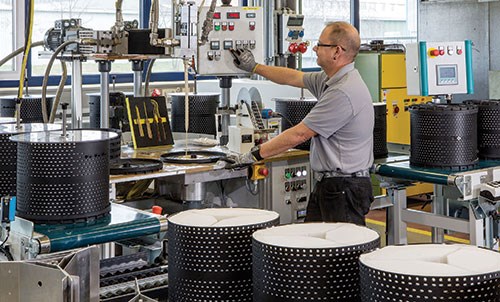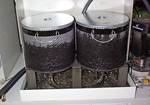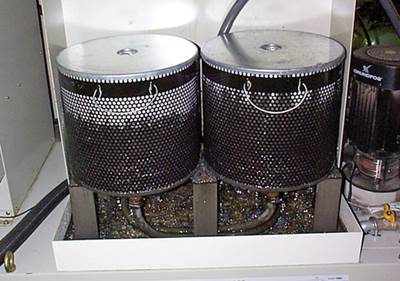Achieving Efficient Filtration
Filters and media choices are key to removing dirt during the EDM process and producing smooth, even finish surfaces.
The EDM process generates various amounts of dirt particles, whether the material being cut is aluminum, platinum, titanium or gold. It is important to collect and filter these dirt particles so that the finished cut does not result in a rough and uneven surface. An EDM filter and its media can effectively collect this dirt, and their construction are key.
Each material being cut can be classified by its dirt extraction efficiency (dirt size particles and consistency). For example, aluminum generates large dirt particles (10-20 microns) and requires an EDM filter that can hold larger particles without clogging. Unfortunately, no official filter efficiency classes currently exist that would help to ease the filter selection process. However, there are two important factors any manufacturing company should take into consideration: filter media and pleating technology. Both are important for high dirt-removal efficiency and long filter service life.
Determine the appropriate filter media. An EDM filter consists of pleated (folded) filter media constructed with a cellulose or synthetic fiber material whose structure permits the separation of dirt particles from the dielectric fluid during the cutting process. Filter media with cellulose fibers (paper-based raw material) require an impregnation of phenolic residue to enhance their mechanical stability during filter installation and while in the dielectric fluid. On the other hand, this exact impregnation causes an increase in conductivity due to ion exchange. This has a negative influence on the process, permitting rust to form more easily.
An optimal solution is a filter with a media that has no negative influence on the dielectric fluid, such as one consisting of fully synthetic fibers that do not require any impregnation to ensure mechanical stability. Additional advantages of a synthetic filter media include its minimal thickness (0.25 micron), which yields slow resistance against the flow and therefore lengthens the filter’s service life.
Integrate the appropriate pleating. The smaller the parting (space) between each pleat in the filter, the greater the total filtration surface area that can be realized. However, every filter media and pleating structure has a specific minimum spacing that ensures the pleats do not clog with dirt. To achieve optimal filter service life, it’s important to determine the right amount of filter area with the ideal pleat partition corresponding to the given installation space. Different EDM filter solutions include single-bellow, double-bellow and progressive triple-bellow filters.
Triple-bellow EDM filters with progressive pleating actually feature one bellow consisting of three segments. This allows for an enlarged filter surface area and results in very high dirt-holding capacity and long filter service life. Combining this triple-progressive-pleat geometry with a synthetic media yields an EDM filter with a service life as much as 60-percent longer than a standard filter media with a single pleat (see image).
Filter media (cellulose and synthetic) and bellows technology (single-bellow, double-bellow and triple-bellow) can have an impact on the efficiency of the EDM process. Some manufacturers are working toward establishing industry-standardized efficiency classes that would address specific requirements and applications for EDM filters. Such classes would ease filter selection for EDM users and help to determine true filter life and cost.
Related Content
Revisiting Some Hot Runner Fundamentals
What exactly does a hot runner do? If you’ve been in the injection molding industry for any length of time, you might think the answer is obvious, but it is not.
Read MoreSolving Mold Alignment Problems with the Right Alignment Lock
Correct alignment lock selection can reduce maintenance costs and molding downtime, as well as increase part quality over the mold’s entire life.
Read MoreHow to Eliminate Chatter
Here are techniques commonly used to combat chatter and guidelines to establish a foundation for optimizing the moldmaking process.
Read MoreRead Next
Four Key Areas Of EDM Maintenance
Simply monitoring and maintaining four key areas on an ongoing basis will extend machine life and reduce long-term maintenance and service costs.
Read MoreReasons to Use Fiber Lasers for Mold Cleaning
Fiber lasers offer a simplicity, speed, control and portability, minimizing mold cleaning risks.
Read MoreHow to Use Continuing Education to Remain Competitive in Moldmaking
Continued training helps moldmakers make tooling decisions and properly use the latest cutting tool to efficiently machine high-quality molds.
Read More























